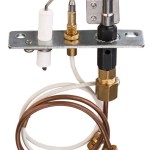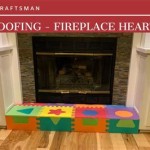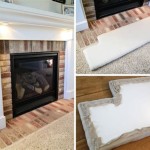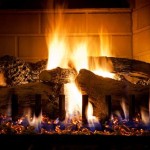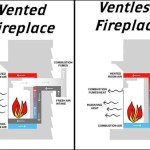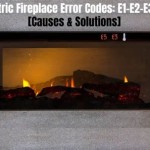Best Fireplace Gas Inserts: A Comprehensive Guide
Fireplace gas inserts offer a convenient and efficient alternative to traditional wood-burning fireplaces. They provide the ambiance of a real fire without the hassle of chopping wood, managing kindling, or cleaning up ashes. Gas inserts are essentially self-contained units that fit directly into an existing fireplace opening, utilizing natural gas or propane as fuel. The market offers a wide array of options, each with varying features, efficiencies, and aesthetic designs. Selecting the best gas insert requires careful consideration of several factors, including heating capacity, style, safety features, and budget.
This article aims to provide a comprehensive guide to understanding fireplace gas inserts. It will explore key considerations when choosing an insert, highlight some of the top-rated models currently available, and offer insights into maximizing the benefits of this heating appliance. The information presented is designed to empower homeowners with the knowledge necessary to make an informed decision that aligns with their individual needs and preferences.
Understanding Heating Capacity and Efficiency
One of the primary functions of a fireplace gas insert is to provide supplemental heat to a home. Therefore, understanding the heating capacity, measured in British Thermal Units (BTUs), is crucial. The appropriate BTU output depends on the size of the space to be heated. A smaller room might only require an insert with a lower BTU rating, while a larger area will necessitate a more powerful unit with a higher BTU output.
Calculating the appropriate BTU requirement involves considering the square footage of the room, the level of insulation, the climate, and the number of windows and doors. Online BTU calculators and professional consultations from fireplace retailers can assist in determining the ideal heating capacity for a specific space. Choosing an insert with insufficient BTU output will result in inadequate heating, while selecting a unit with excessive BTU output can lead to overheating and energy waste.
Efficiency is another critical factor to examine. Gas inserts are rated by their Annual Fuel Utilization Efficiency (AFUE), which represents the percentage of fuel converted into usable heat. A higher AFUE rating indicates a more efficient unit, resulting in lower energy bills and reduced environmental impact. Look for inserts with AFUE ratings of 70% or higher for optimal efficiency. Vented gas inserts generally have lower AFUE ratings compared to vent-free models, although vent-free models may have restrictions based on local codes and concerns regarding indoor air quality.
Factors influencing efficiency include the type of burner, the presence of a blower, and the quality of the insulation. Burner design affects the combustion process and the distribution of heat. Blowers help to circulate warm air throughout the room, enhancing heating effectiveness. High-quality insulation minimizes heat loss from the insert, improving overall efficiency. Investing in an insert with advanced efficiency features may require a higher initial investment, but it can lead to significant long-term savings on energy costs.
Exploring Styles and Aesthetic Options
Beyond functionality, the aesthetic appeal of a fireplace gas insert is a significant consideration. Gas inserts are available in a wide range of styles, from traditional designs that mimic the look of a wood-burning fireplace to modern and contemporary options. The style should complement the existing décor of the room and reflect the homeowner's personal taste.
Traditional gas inserts often feature realistic-looking logs, glowing embers, and a brick-lined firebox. These models aim to replicate the visual characteristics of a wood-burning fire, providing a sense of warmth and nostalgia. Contemporary gas inserts, on the other hand, typically feature clean lines, minimalist designs, and alternative media options such as glass beads, river rocks, or decorative stones. These models offer a sleek and modern aesthetic that appeals to homeowners with contemporary design preferences.
The firebox itself can be customized with different liners, such as brick, porcelain, or ceramic. These liners enhance the visual appeal of the firebox and can contribute to the overall aesthetic of the insert. The flame pattern is another important consideration. Some inserts offer adjustable flame heights and patterns, allowing homeowners to customize the look of the fire. Remote controls often provide convenient control over flame settings, temperature, and blower speed.
Material choices affect the overall appearance and durability of the insert. Cast iron is a popular choice for its durability and classic look. Steel is another common material, offering a sleek and modern aesthetic. Finishes such as matte black, brushed nickel, and antique brass can further customize the appearance of the insert. Choosing a style and finish that complements the existing fireplace mantel and surrounding décor will ensure a cohesive and aesthetically pleasing look.
Prioritizing Safety Features and Installation Considerations
Safety is paramount when selecting and installing a fireplace gas insert. Gas inserts produce heat and utilize flammable fuels, so it is essential to choose a model with robust safety features. Look for inserts that are certified by reputable organizations such as CSA (Canadian Standards Association) or UL (Underwriters Laboratories). These certifications indicate that the insert has been tested and meets established safety standards.
Important safety features to consider include a flame failure device, which automatically shuts off the gas supply if the flame is extinguished. This prevents the accumulation of unburned gas, which can pose a fire or explosion hazard. A carbon monoxide detector is also essential to detect the presence of this odorless and potentially deadly gas. Regular inspection and maintenance of the gas insert, including cleaning the burner and venting system, are crucial for ensuring safe operation.
Proper installation is critical for both safety and performance. It is highly recommended that a qualified and licensed professional install the gas insert. Improper installation can lead to gas leaks, carbon monoxide poisoning, and other hazards. The installer will ensure that the insert is properly connected to the gas supply, that the venting system is correctly configured, and that all safety features are functioning correctly.
Ventilation is another important consideration. Gas inserts can be either vented or vent-free. Vented inserts require a chimney or vent to exhaust combustion gases to the outside. Vent-free inserts, on the other hand, do not require a vent and exhaust combustion gases directly into the room. While vent-free inserts offer greater installation flexibility, they are subject to stricter regulations in some jurisdictions due to concerns about indoor air quality. It is important to consult local building codes and regulations to determine whether vent-free inserts are permitted and to ensure proper ventilation is in place.
Maintenance is also crucial for longevity and safety. Annual inspections by a qualified technician are recommended to ensure that the insert is operating safely and efficiently. Regular cleaning of the glass door and burner will help to maintain the aesthetic appeal and performance of the insert. Following the manufacturer's instructions for maintenance and care will help to prolong the lifespan of the insert and ensure safe operation for years to come.
Investing in a high-quality, properly installed, and well-maintained fireplace gas insert can provide years of warmth, comfort, and aesthetic enjoyment. By carefully considering the factors outlined in this guide, homeowners can make an informed decision that aligns with their individual needs and preferences, ensuring a safe and satisfying experience.

Best Gas Fireplace Inserts Fireplaces Direct Learning Center
.aspx?strip=all)
Top 11 Gas Fireplace Insert Trends Of 2024

How To Buy A Gas Fireplace Insert Buyer S Guide From Regency

Best Gas Fireplace Inserts Fireplaces Direct Learning Center

Gas Fireplace Inserts Pros And Cons Of Ventless Fireplaces

Best Gas Fireplace Inserts Fireplaces Direct Learning Center

Best Gas Fireplace Insert Top 5 For Existing Fireplaces

Gas Burning Fireplace Inserts Sierra Hearth And Home

Best Fireplace Inserts In 2024

Chaska 335s Gas Fireplace Insert Fireplaces
Related Posts


